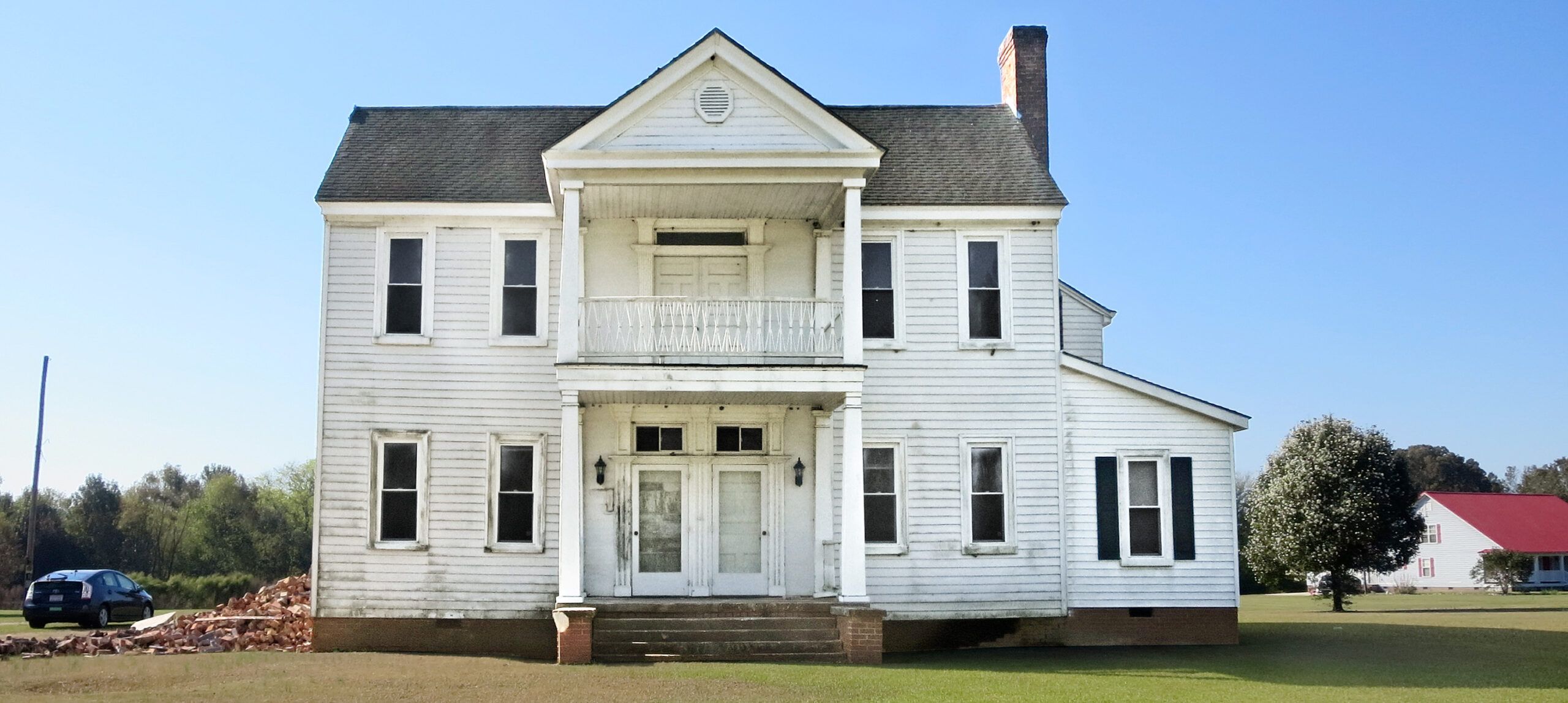Stately Federal
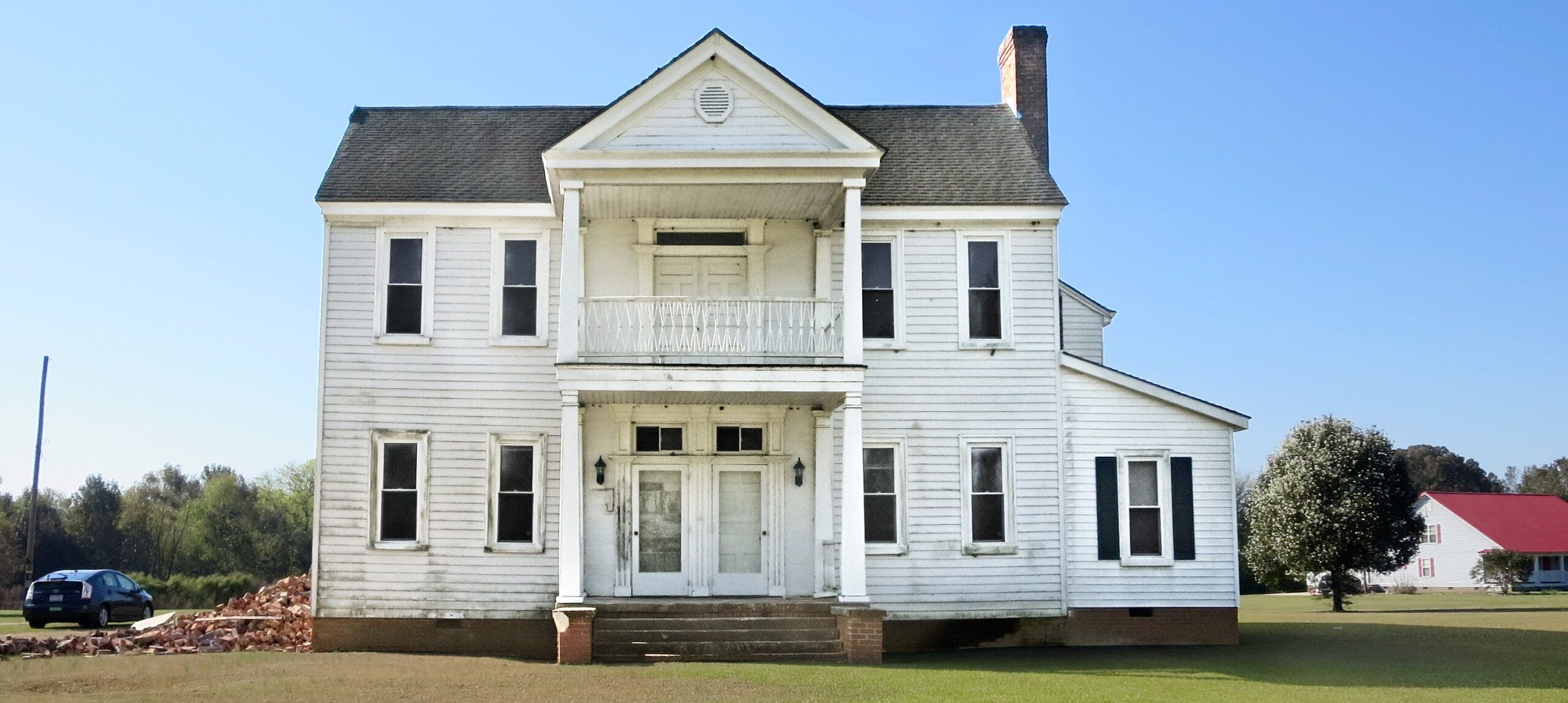
Price: $60,000
Location: Averasboro, NC
Contact: Cathleen Turner, Preservation North Carolina, 919-401-8540
The History: Around 1835, William Turner Smith and his new wife, Mary Campbell Smith, built this plantation house just a short distance from the Cape Fear River, where William’s father conducted a lucrative ferry operation. Six children and a second-story rear addition followed. In 1865, 10 years after William’s death, the home served as a field hospital for Union troops during the Civil War’s Battle of Averasboro. Today it sits on a two-acre parcel just inside the southern boundary of the Averasboro Battlefield Historic District, and Preservation North Carolina is looking for an owner who can help the home regain its former grandeur.
Shown: The 3,756-square-foot home was built in the Federal style, but a remodel about 20 years later added elements that reflect the Greek Revival style, including the two-story pedimented portico.
Wainscoting Staircase
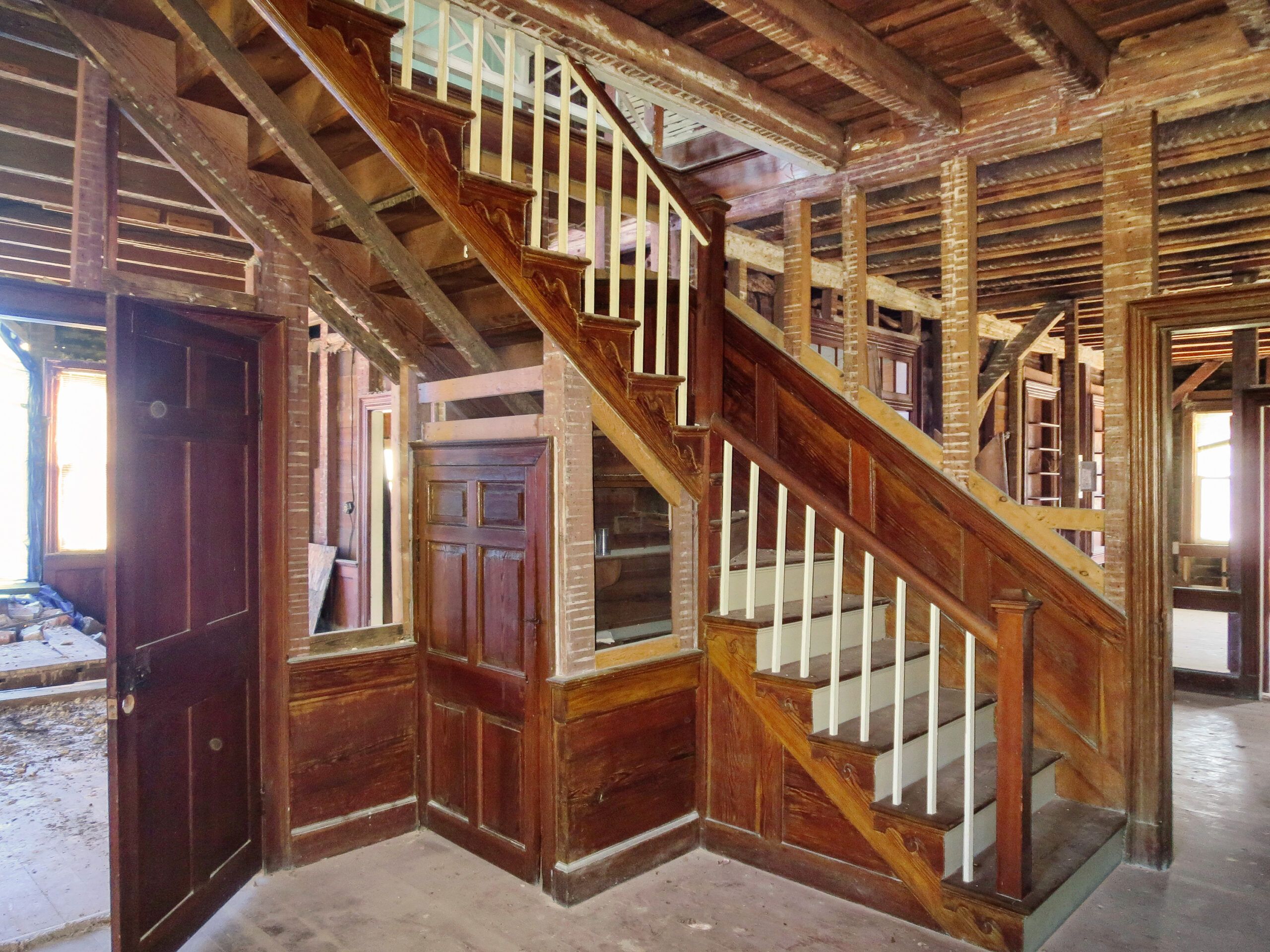
Why save it? Though some of the interior walls were taken down to the studs by a previous owner, many of the house’s original architectural details remain, including paneled wainscot, six-panel doors, fireplace mantels, and built-ins. On the exterior, a two-story entry porch with fluted pilasters and clapboard siding are still intact.
Shown: While plaster has been removed from some walls on the first floor, the original wainscot along the staircase—likely longleaf pine or poplar—remains.
Upstairs Mantel
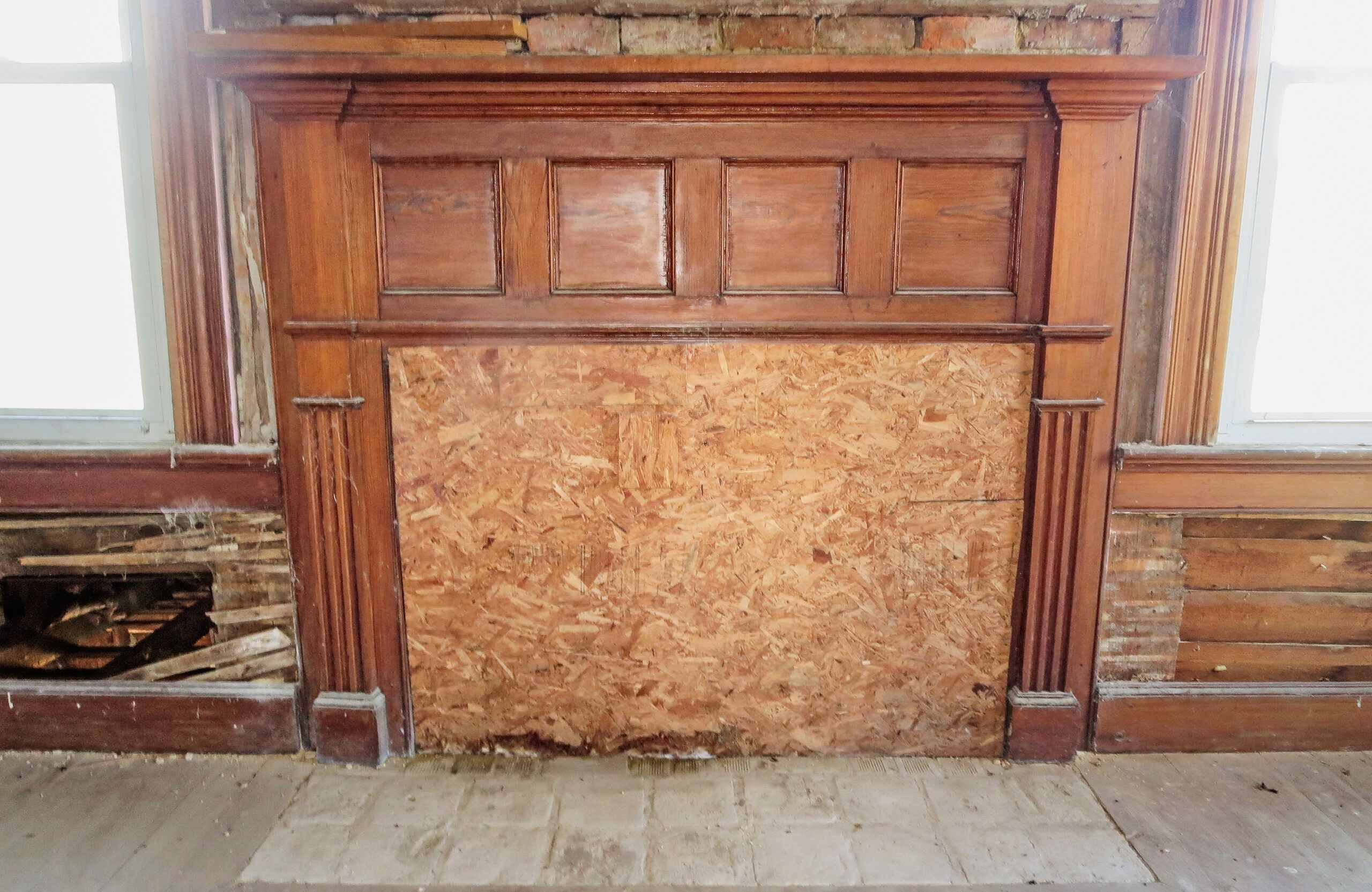
What it needs: Some foundation work and new mechanical and plumbing systems are needed, as are a new kitchen and bathrooms. The interior walls await new plaster or repair. Tax credits will help defray the cost of making historically accurate improvements—such as installing period-appropriate nine-over-nine windows and rebuilding the east-facing chimney brought down by Hurricane Florence—as overseen by Preservation North Carolina. Inside, the floor plan allows for a number of configurations; the right preservation-minded buyer is bound to be inspired by the house’s potential, with so many of its bones exposed.
Shown: This upstairs bedroom retains its Greek Revival-style fireplace mantel.
Many Doors
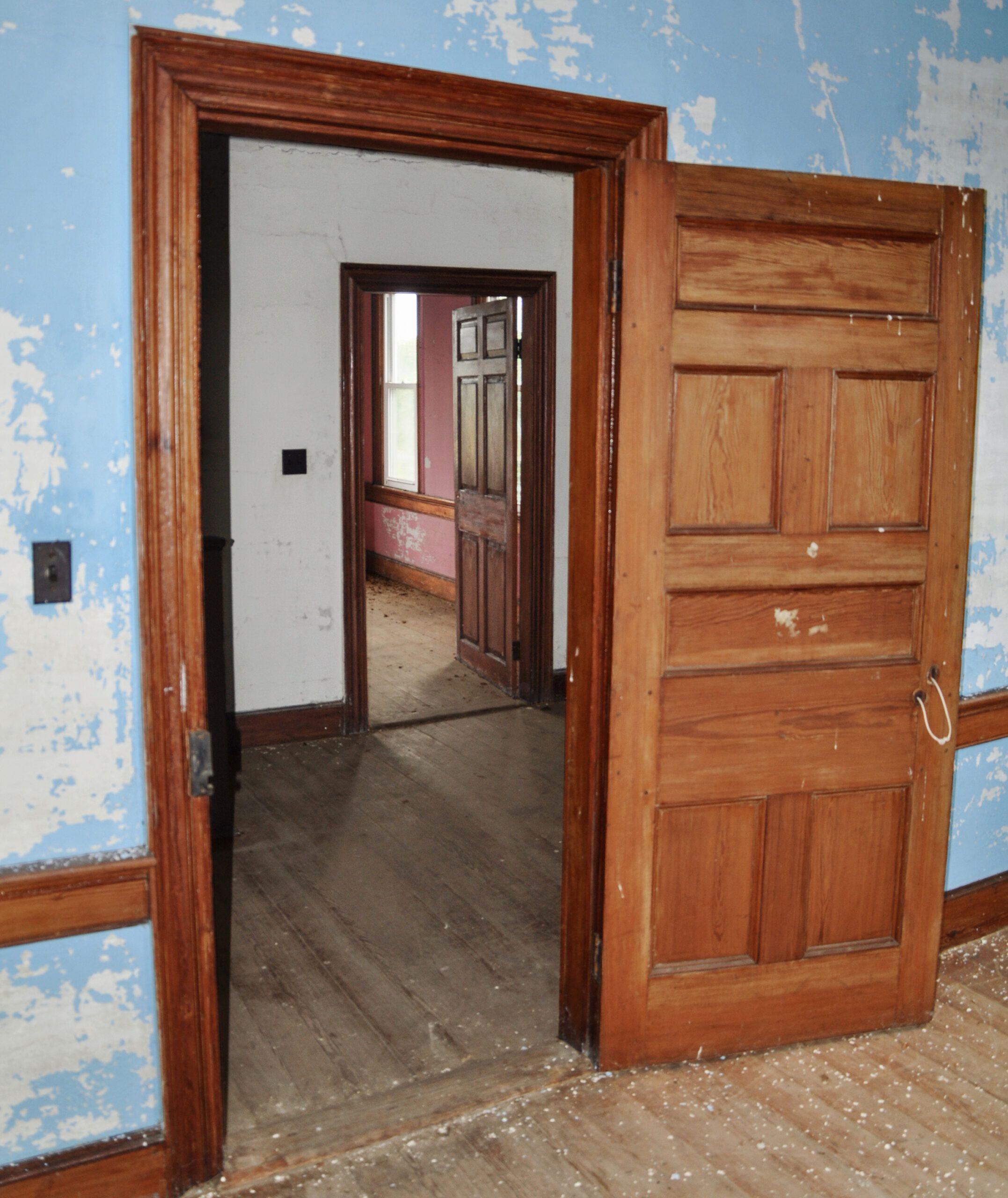
Many of the paneled doors are still in place, with several more in storage awaiting reinstallation.
Period Transom
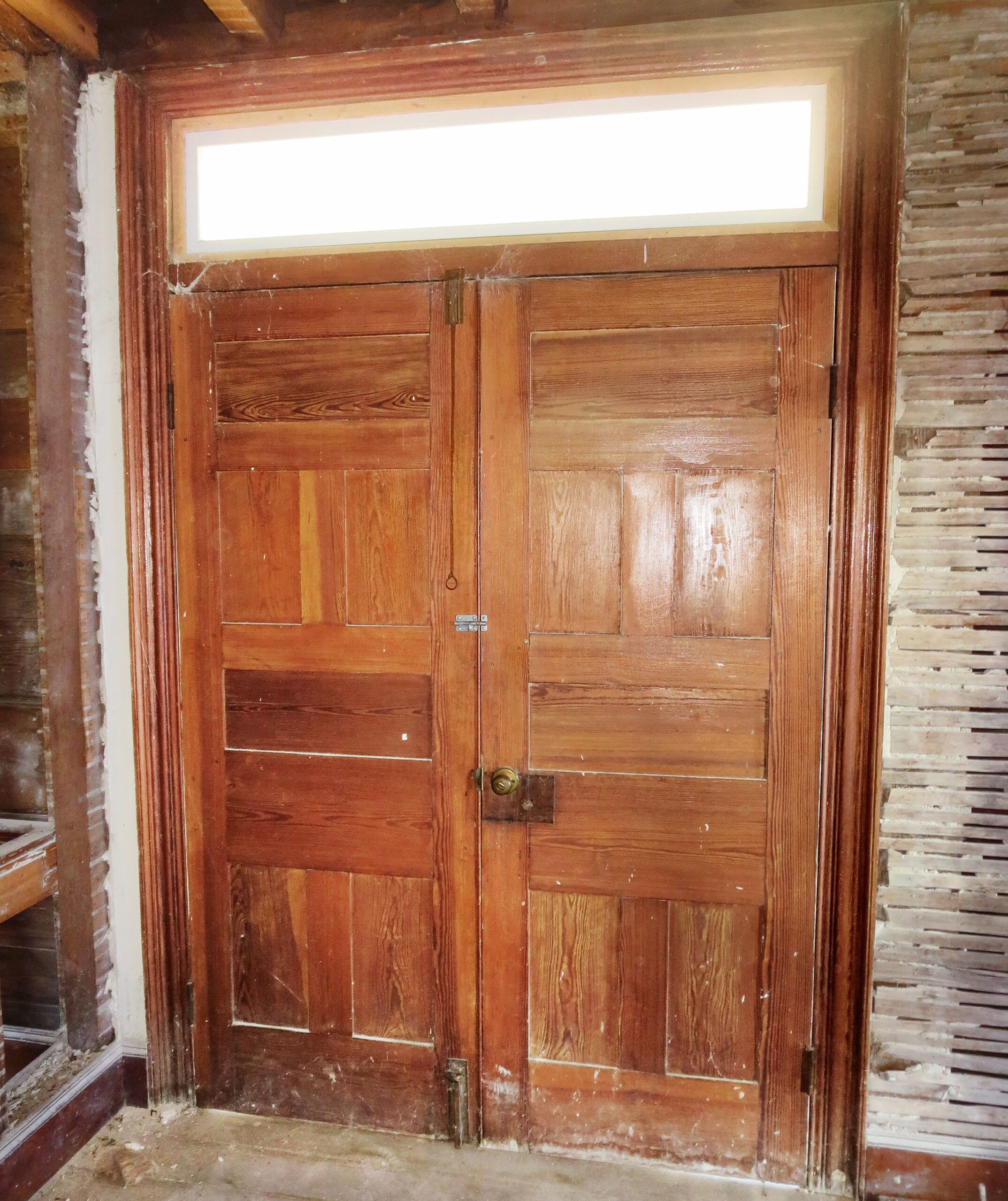
Capped with an original transom, these double doors, fitted with period hardware, lead out to the second-story porch bay.
Closed Porch
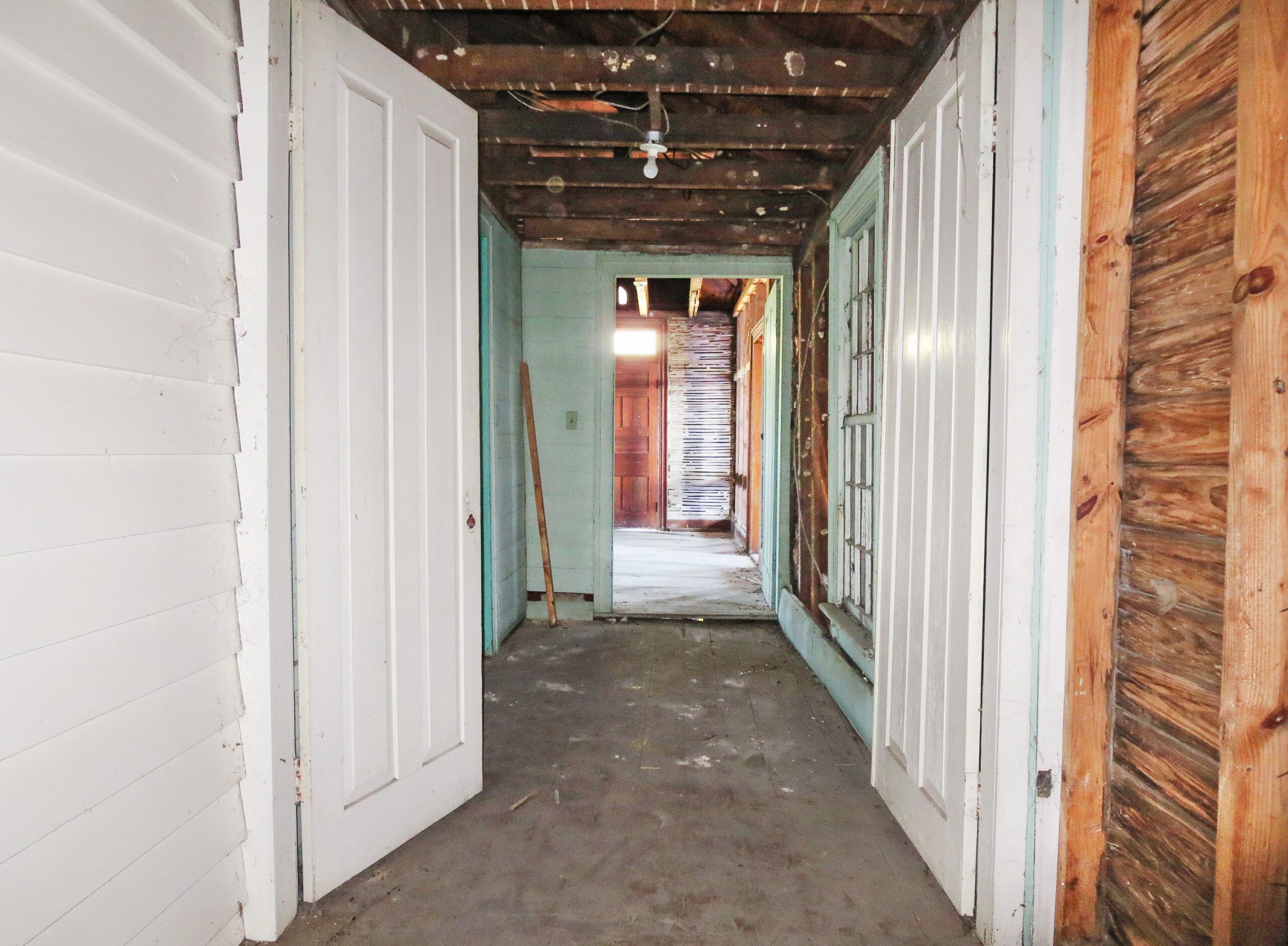
The rear upstairs porch was enclosed by a previous owner. The new owner will likely want to open it back up, along with the piazza directly below.
The Upper Sheaf
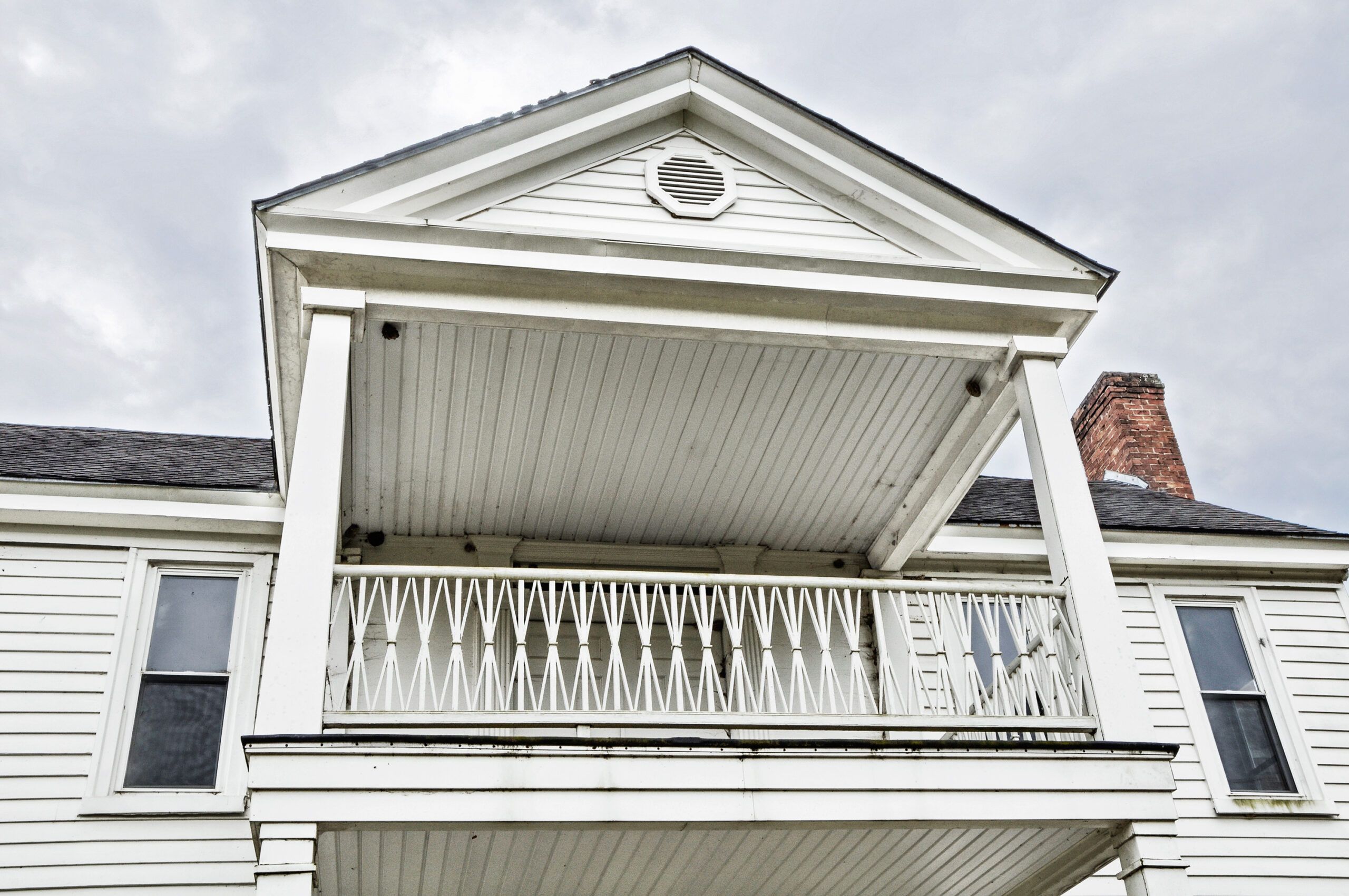
The upper level of the two-story entry porch features the same “sheaf of wheat” balustrade that embellishes the sides of the portico below.
Chippendale Rail
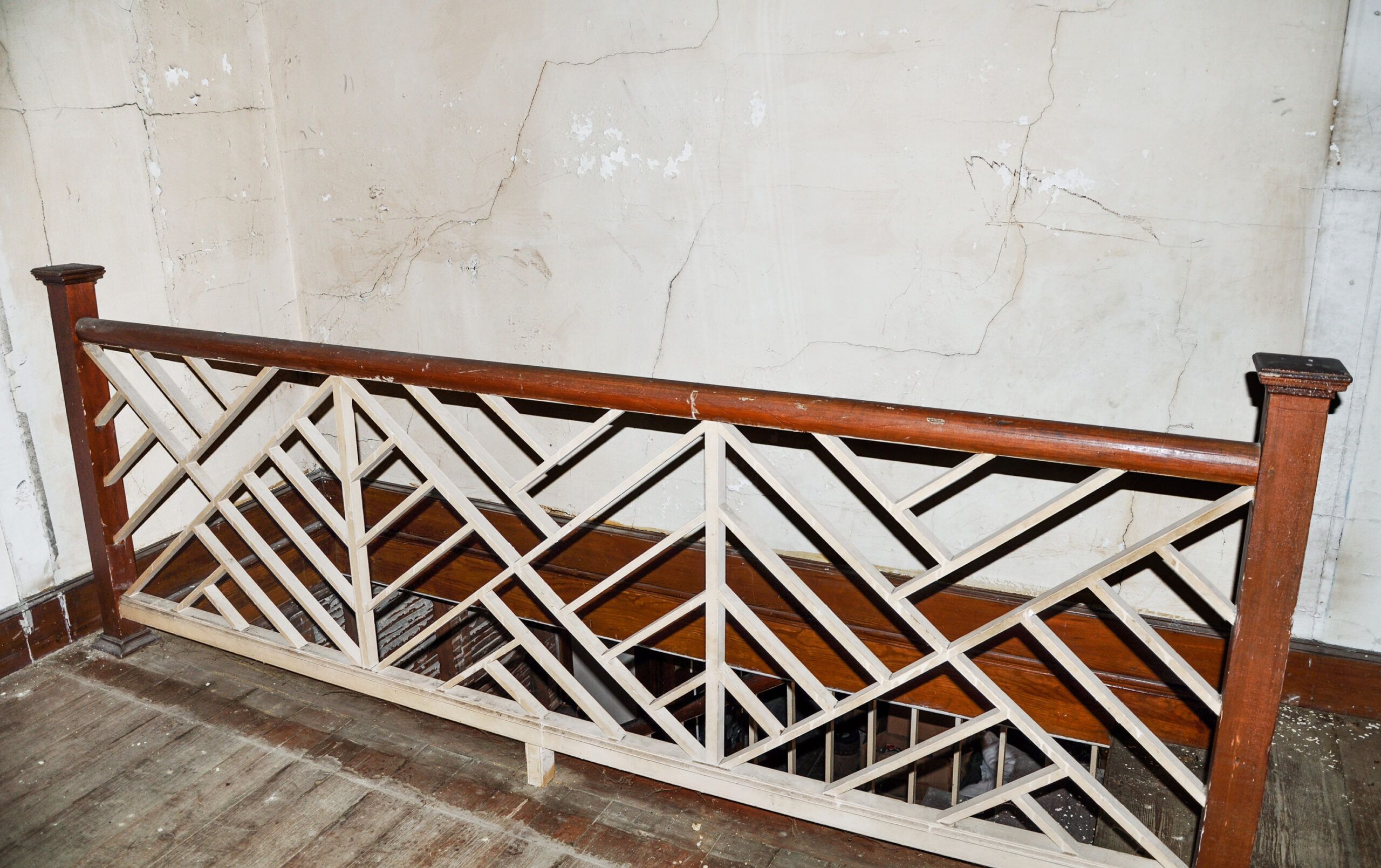
A Chinese Chippendale-style railing on the second floor.
The Greek Revival Remodel
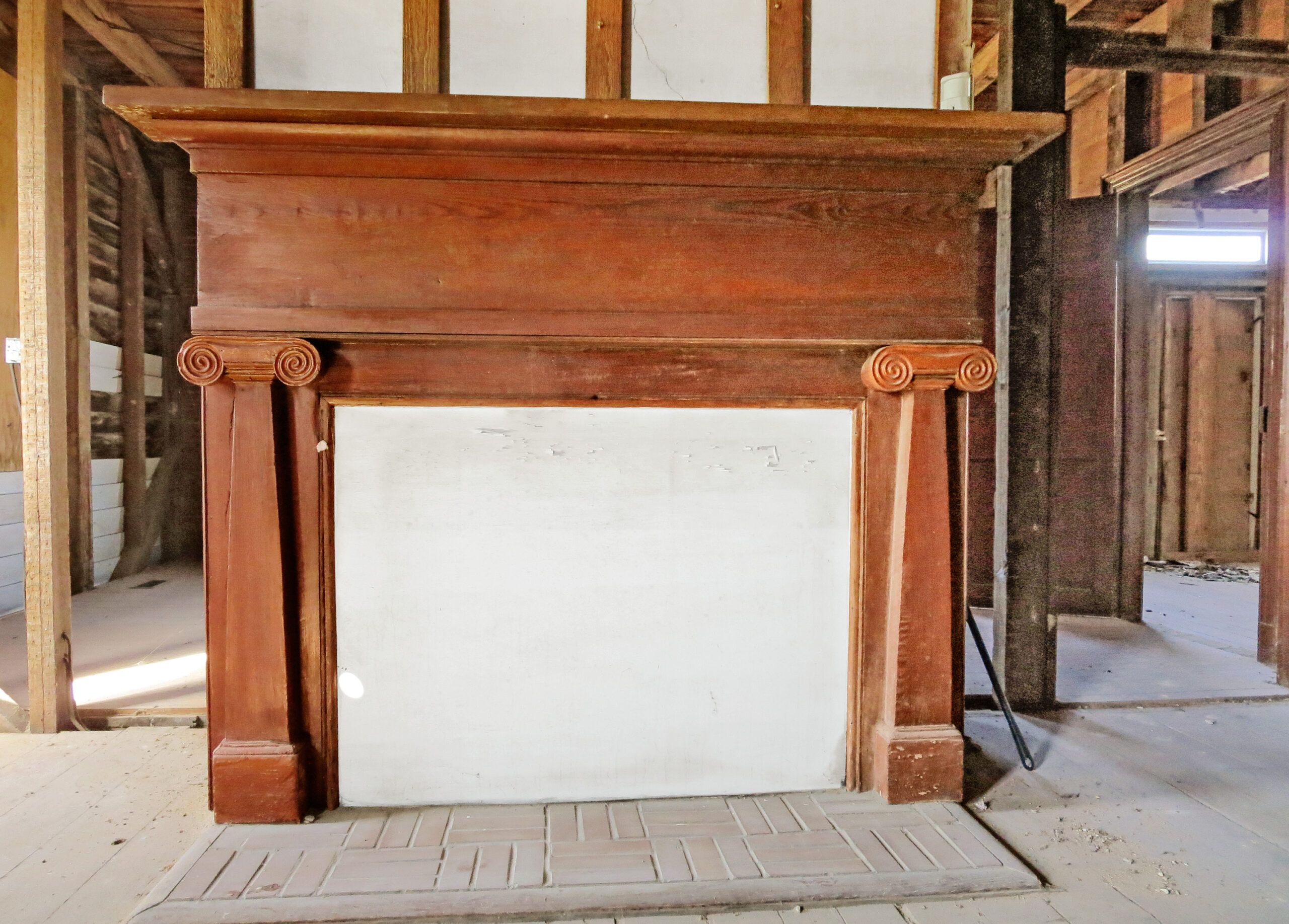
A mantel with pilasters bearing Ionic capitals was likely added during the remodel in the 1850s, when the Greek Revival style was in vogue.
Spare Mantel
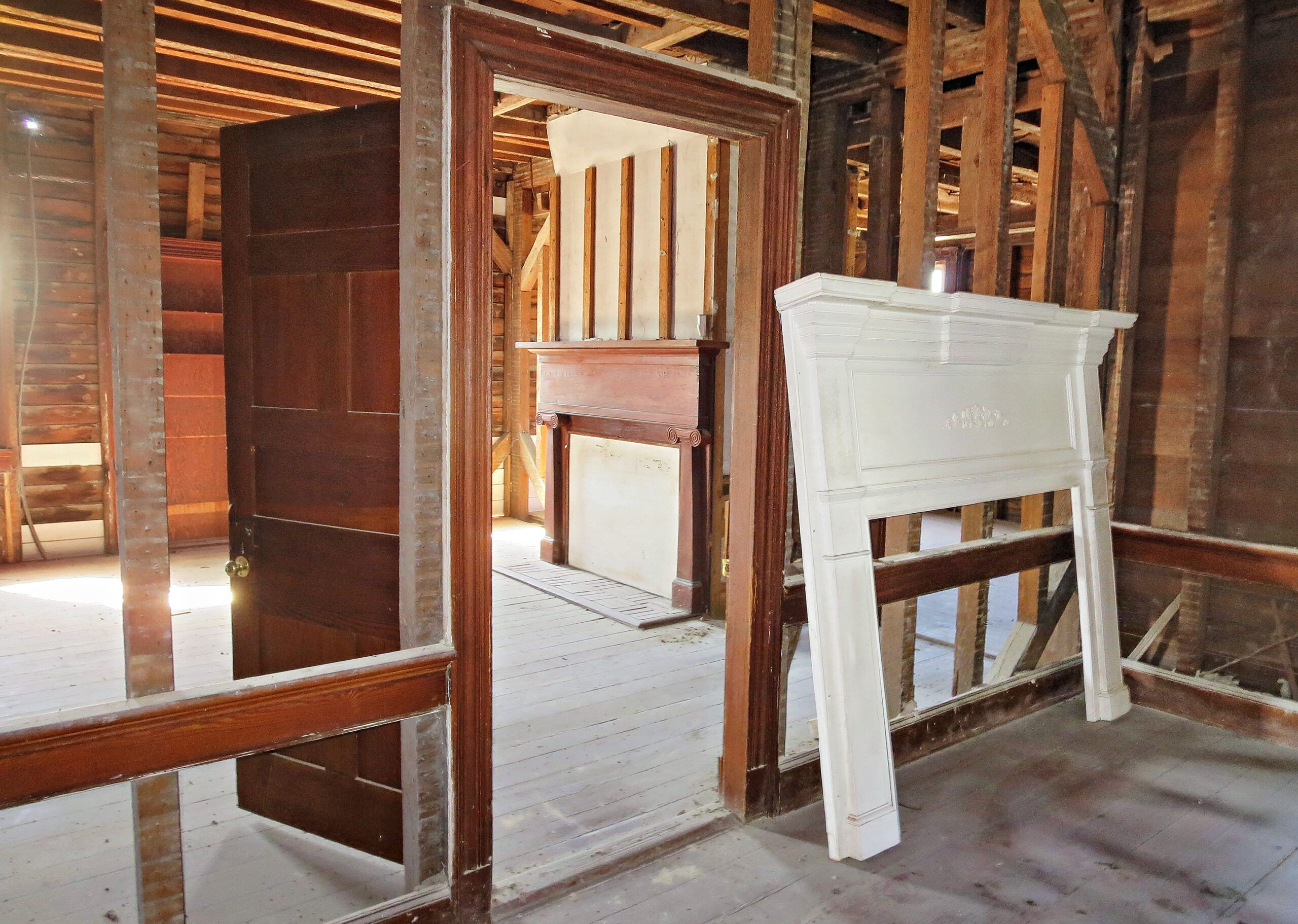
Much of the damaged plaster has been removed from the rooms on the first floor, including the main dining room, whose mantel is still in place. In the west parlor, a painted mantel awaits reinstallation.
Western Addition
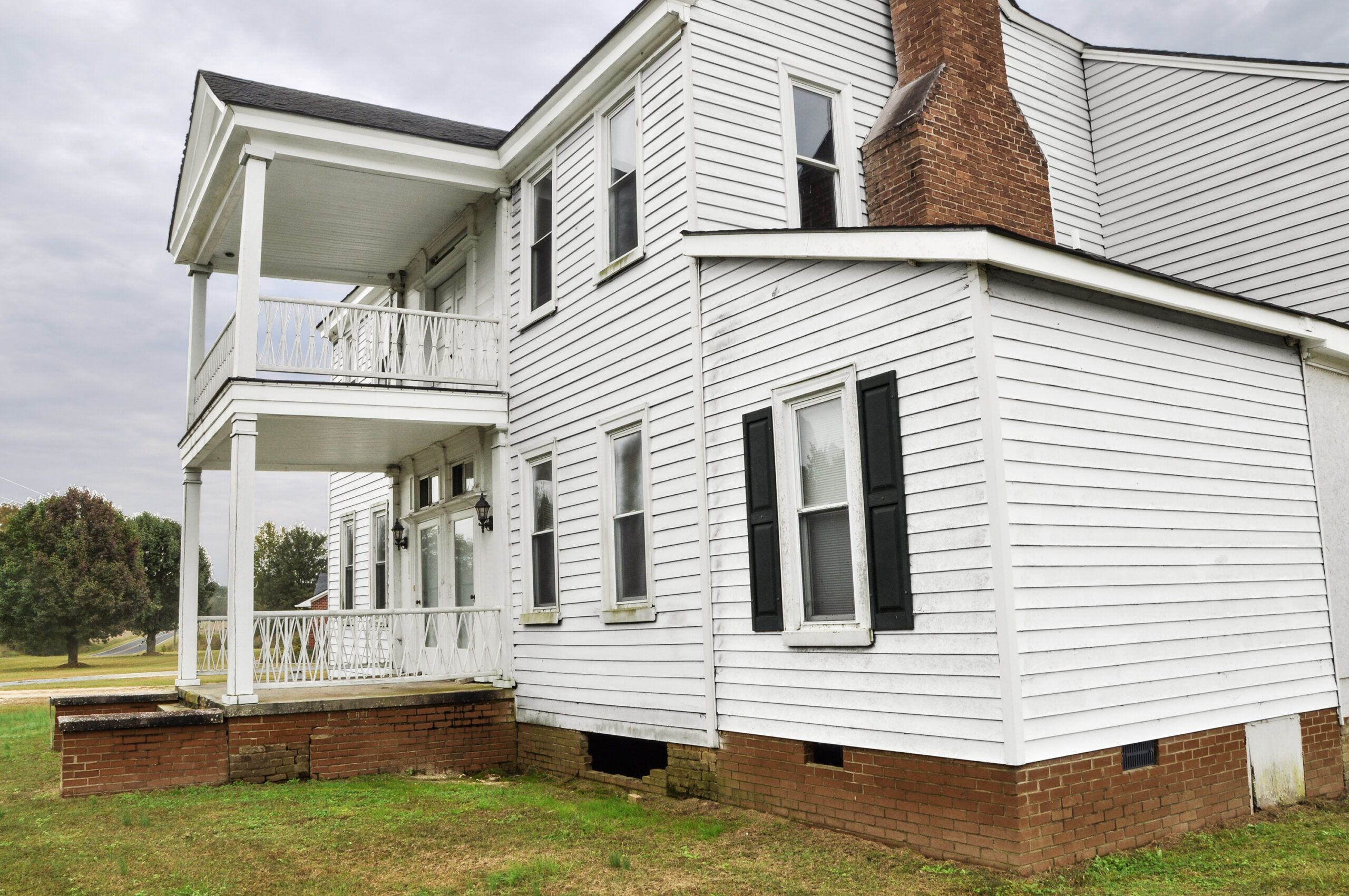
On the west side of the house, a later bathroom addition must be removed to expose the original chimney and its ornamental brickwork. Then, once the storm-damaged east-facing chimney is rebuilt, the house’s symmetrical facade will be enhanced by twin chimneys, one on each side.
Impaired Structure
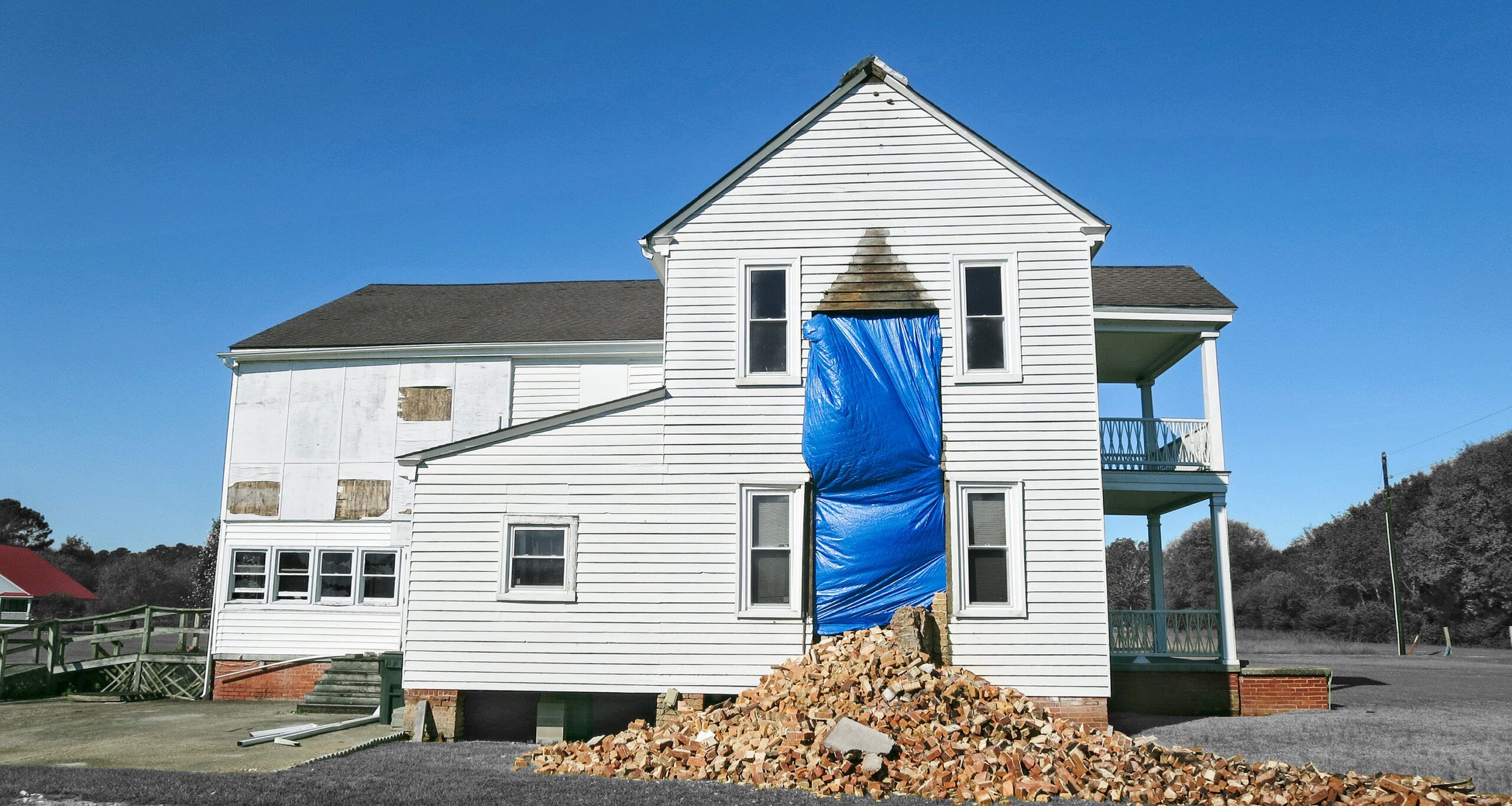
In September 2018, Hurricane Florence damaged the east-facing chimney. The impaired structure was demolished, the hole boarded up, and the bricks stored so that the chimney can be rebuilt.
Thanks to: Cathleen Turner, Preservation North Carolina, 919-401-8540
